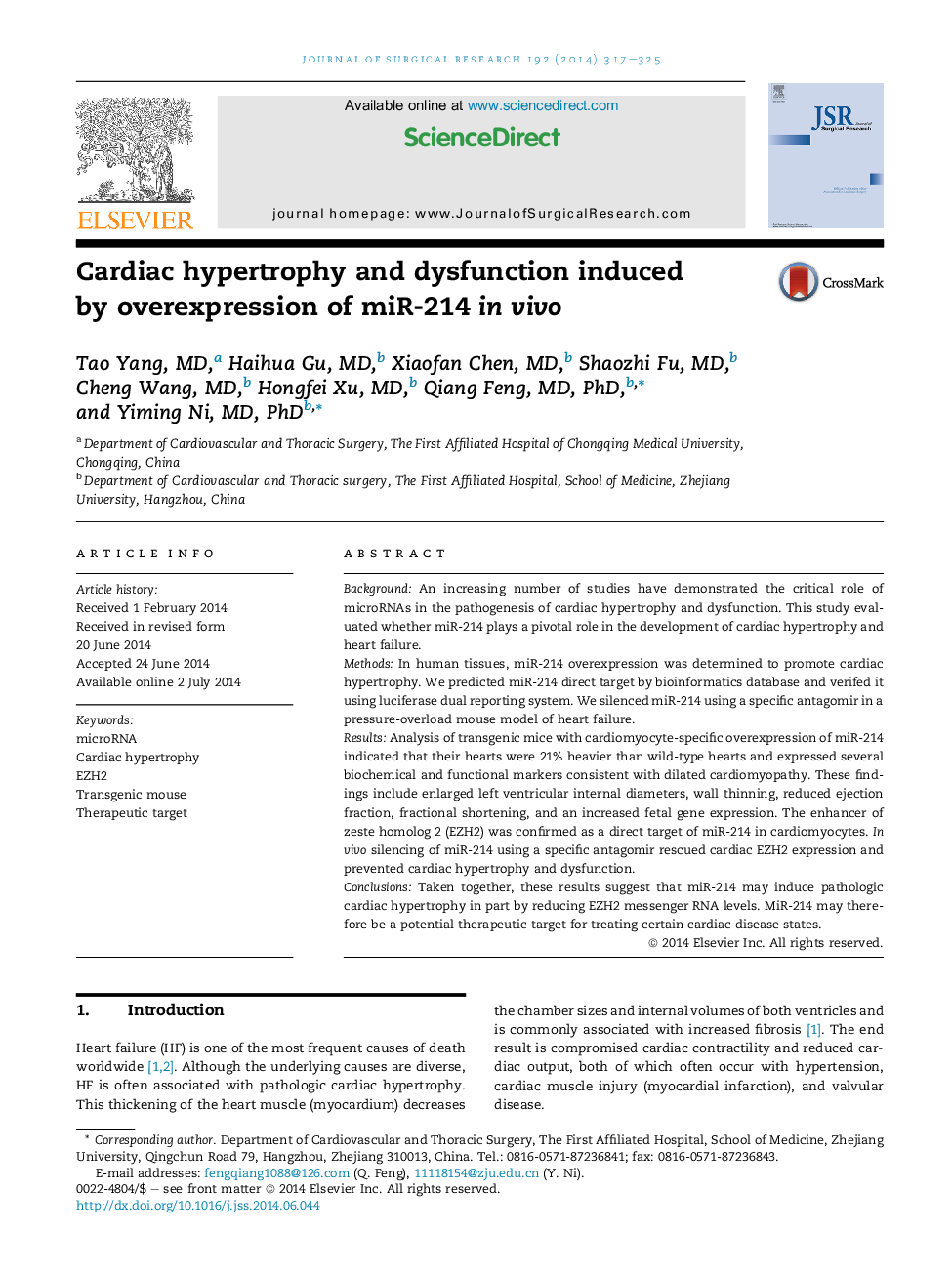| Article ID | Journal | Published Year | Pages | File Type |
|---|---|---|---|---|
| 4300001 | Journal of Surgical Research | 2014 | 9 Pages |
BackgroundAn increasing number of studies have demonstrated the critical role of microRNAs in the pathogenesis of cardiac hypertrophy and dysfunction. This study evaluated whether miR-214 plays a pivotal role in the development of cardiac hypertrophy and heart failure.MethodsIn human tissues, miR-214 overexpression was determined to promote cardiac hypertrophy. We predicted miR-214 direct target by bioinformatics database and verifed it using luciferase dual reporting system. We silenced miR-214 using a specific antagomir in a pressure-overload mouse model of heart failure.ResultsAnalysis of transgenic mice with cardiomyocyte-specific overexpression of miR-214 indicated that their hearts were 21% heavier than wild-type hearts and expressed several biochemical and functional markers consistent with dilated cardiomyopathy. These findings include enlarged left ventricular internal diameters, wall thinning, reduced ejection fraction, fractional shortening, and an increased fetal gene expression. The enhancer of zeste homolog 2 (EZH2) was confirmed as a direct target of miR-214 in cardiomyocytes. In vivo silencing of miR-214 using a specific antagomir rescued cardiac EZH2 expression and prevented cardiac hypertrophy and dysfunction.ConclusionsTaken together, these results suggest that miR-214 may induce pathologic cardiac hypertrophy in part by reducing EZH2 messenger RNA levels. MiR-214 may therefore be a potential therapeutic target for treating certain cardiac disease states.
